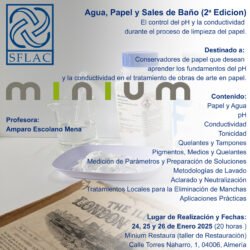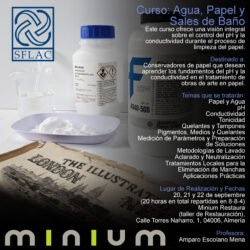Light is also an important factor that can cause damage to your collection. As a general rule, stone, metal, glass and ceramics are not dramatically affected by light, but all organic materials, that is to say, originated from plant or animals, are susceptible to be damaged by it. Textiles become brittle, colours in woodblock prints, watercolors or miniatures fade because the particles of pigment almost without any binder are fully exposed to the light; similar effects can be observed in ethnographic objects and so on.
Even if it is difficult to control the amount of light in a regular home, some preventive conservation measures such as UV filtered glass in windows and in the frames for pieces exhibited under glass, as well as UV filtered Plexiglas boxes for displaying objects are good procedures that will slow down substantially the deterioration processes.

The signature in this document was faded due to light exposure. Preventive conservation measures as a UV filtering glass would have prevent the damage
Regarding Air Pollution, from solid particulates that can cause erosion on the surfaces, to gaseous pollution, we have a wide range of substances that can damage the artworks. Sulfur dioxide combined with a high RH attacks marble limestone and sand stones, cellulosic materials, proteinic materials, pigments and dyes and metals. Ozone, abundant nowadays in households because of those “air cleaning, deodorizer, purifier machines” is a strong oxidant that attacks all organic materials increasing substantially the rate of oxidation, chlorides common in coastal zones are the most dangerous contaminants for metals. Those mentioned are the more usual contaminants. Fortunately they can be easily controlled by the use of carbon activated filters in the air conditioning system.
In brief, How to take care of your collection? Just use a little common sense, be proactive, take the proper preventive conservation measures to protect your pieces and subsequently prolong the lifespan of your collection.





